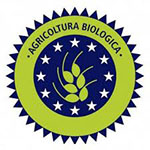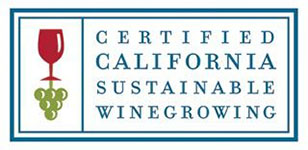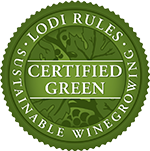Go Green: the low down on eco-friendly wine
Organic. Biodynamic. Natural. Sustainable. Low Sulfite. Yikes. You want to buy some wine that’s good for the earth, and maybe a little better for you. But how? This proliferation of terms has even the experts confused.
So just what is eco-friendly wine, anyway? Believe us, there are many factors to consider, not least of which is water usage, type of packaging, shipping distance, waste management, pest management, and other aspects of viticulture. But while there is lots of agreement that these factors are important, just how to manage them is still up for debate. To help set some standards, a few groups have jumped into the arena with programs for grape growers to improve sustainably.
To figure it out, we got down and dirty (couldn’t help it!) to bring you not only the definitions winemakers are using to label their eco-friendly wines, but also the logos they’re allowed to display on the label.
Organic: Wine made from grapes grown organically. This typically excludes artificial chemical fertilizers, pesticides, fungicides and herbicides in viticulture, though regulations vary by country. Labeling a wine ‘organic’ does not typically make a statement about the winemaking process, just the grapes.
In Europe wines with organic grapes will have one of two logos.
Biodynamic: Wines made using biodynamic methods to grow and harvest the grapes, as well as in wine making. Organic farming is used in addition to employing soil supplements prepared according to the system founded by Rudolf Steiner, which follows a planting calendar based upon the sun, moon and cosmos, and treats the earth as a living and receptive organism. Demeter International is the largest of three organizations which certify biodynamic wines.
Natural: Wines made with minimal chemical and technological intervention in grape growing and wine making. While there is at present no legal definition for natural wine, the key difference is that natural winemakers are committed to using no (or minimal) additives or processing aids.
California Certified Sustainable: Approved in 2018, winemakers that implement sustainable practices can be certified by an independent auditor, who monitors 58 individual requirements in the vineyard and another 37 in the winery. Criteria include avoiding pesticides and herbicides, water and energy conservation, pest management, wildlife habitat protection and monitoring greenhouse gas emissions.
Salmon Safe: Winegrowers from Oregon, Washington and British Columbia committed to keeping rivers clean by utilizing integrated pest management practices as well as organic and biodynamic vineyards.
LIVE: Independent certification for wine growers of the Pacific Northwest including criteria related to preservation of native habitat, water quality and wildlife, as well as social issues like worker safety, certification on issues ranging from energy and greenhouse gas reduction to water and waste management and community.
Lodi Rules Certified Green: Certification for Winemakers in Lodi, California committed to sustainability including water, community, ecosystem, people, soil, pest management, generational farming, grapes.
So the next time you’re pondering white, red or pink, consider going green. A recent study by UCLA's Institute of Environment and Sustainability which aggregated years of wine reviews from top experts (think Wine Spectator, Wine Enthusiast and Wine Advocate) shows that no matter what you call it (and growers often don’t cop to organic on the label) natural wine is not just good for you and the planet.
It’s also just plain good.






